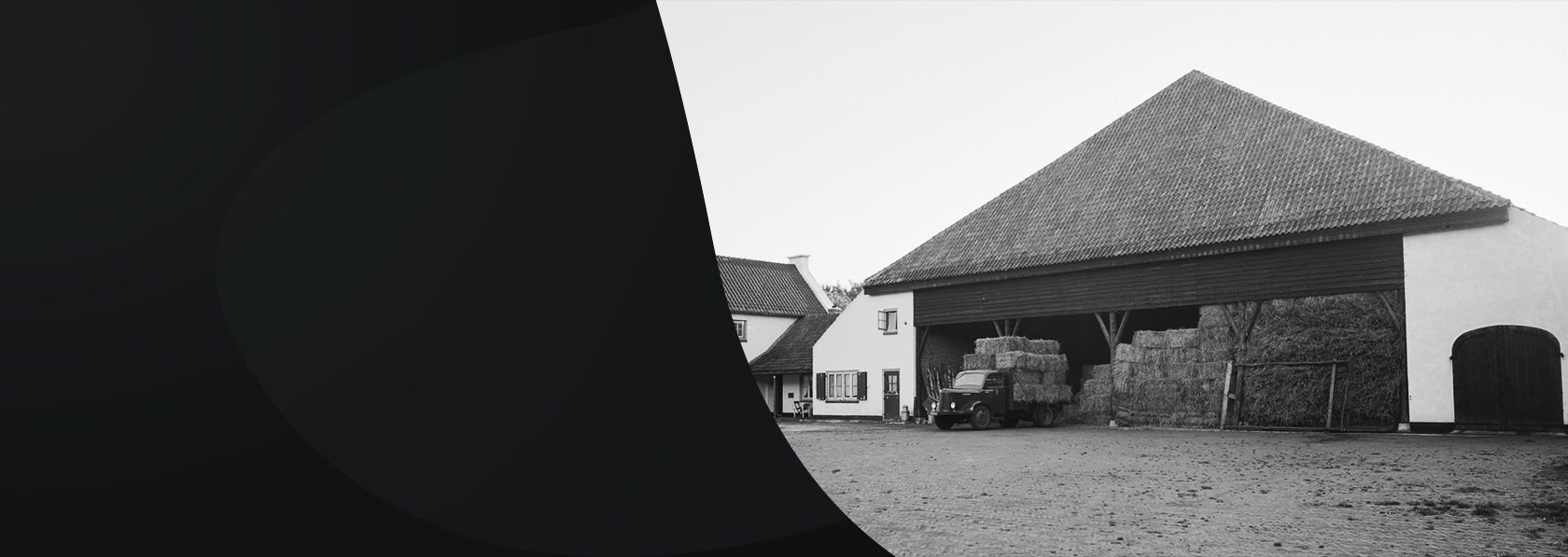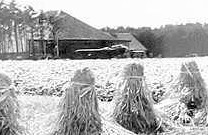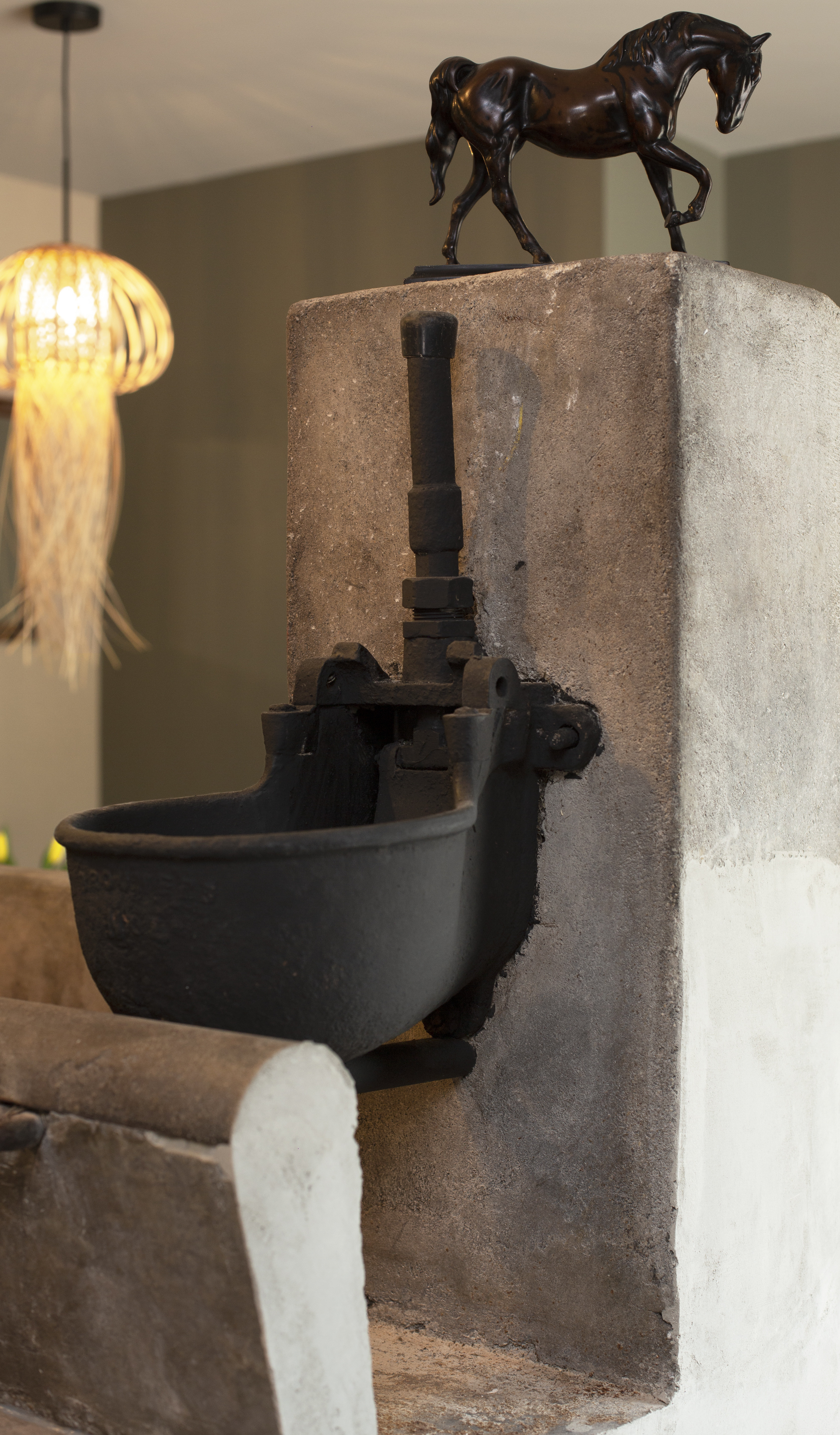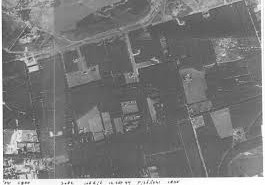
TOEN EN NU
FLIEGERHORST DEELEN
Verwarmd en gecamoufleerdTijdens de Tweede Wereldoorlog kozen de Duitse bezetters het gebied als basis voor hun luchtverdediging. In korte tijd werd vliegveld Fliegerhorst Deelen door de Duitse Luftwaffe aangelegd. De gebouwen behorende bij het vliegveld werden gecamoufleerd om herkenning vanuit de lucht te voorkomen. De gebouwen kregen het uiterlijk van boerderijen, maar hadden muren van 60 cm en stalen luiken voor de ramen.
Zo ook de huidige Adelaerthoeve, deze werd gebouwd naar het kop-hals-romp model boerderij zoals die in het noorden van het land voorkomt. Rondom de bebouwing werden stukken land gecultiveerd zodat de bezetter zich kon voorzien in de behoefte aan landbouw en veeteelt. Na de oorlog zijn veel gebouwen afgebroken en het puin gebruikt bij de wederopbouw van het verwoeste Arnhem. Niet alle gebouwen op het vliegveld werden afgebroken. Er bleef nog een aantal verwarmbare vliegtuighangars, die er aan de buitenkant uitzagen als boerderijen over.
De Amsterdamse architect Heijdelberger maakte de plannen voor de verbouwing van deze vliegtuighangars. Deze kregen de naam ‘De Vier Heemskinderen’ naar het verhaal van Van Montelbaen. Het verhaal gaat over de vier kinderen van graaf Haymijn van Ardennen; Ritsaert, Writsaert, Adelaert en Reinout die de strijd hadden aangebonden tegen Karel de Grote en dit moesten bekopen met het verlies van hun paard, het ros Beyaert.
De vliegtuighangars werden verbouwd als boerderij, waaronder de huidige Adelaerthoeve. Het huidige woonhuis is het omgebouwde voormalige ketelhuis dat gebruikt werd om de hangar te verwarmen. Het plein voor de boerderij is de oprit naar de voormalige rolbaan.
http://www.dickveerman.nl/geen-categorie/de-vier-heemskinderen/
FAMILIE BEDRIJF
Van agrarisch bedrijf naar erfgoed logiesNa operatie Market Garden ligt Arnhem er zwaar gehavend bij. Veel gebouwen zijn verwoest, zo ook de boerderij van Evert en Hendrika Hoogendam. Zij kregen na de oorlog in 1949 de tot woonboerderij omgebouwde Adelarerthoeve toegewezen. Jan Hoogendam nam het opgebouwde bedrijf in 1970 over en trok hier samen met zijn vrouw Maaike Hoogendam - Twigt in. In 2007 kreeg De Adelaerthoeve de status van Rijksmonument. Het boerenbedrijf werd in 2016 gestaakt en een nieuwe generatie nam de hoeve over en zocht naar een passende bestemming voor het Rijksmonument. Samen met de architect Marije Wijers van Atelier Blik en Eelerwoude werd een plan opgesteld voor een nieuwe bestemming. De uitgangspunten voor het ontwerp zijn het beter beleefbaar maken van de historie, een plek creeren voor culturele initiatieven, inpassen erf in de natuur en het aanbieden van logies. Inmiddels werkt de jeugdige vierde generatie mee in het familliebdrijf.
Foto's van
de Adelaerthoeve









